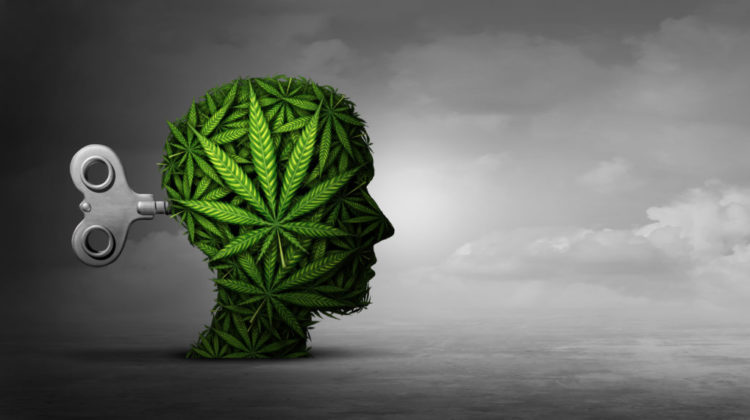
Potency. Tolerance. Benefits. All of these factors contribute to misuse of cannabis – the benefits are well-known, but the fact is, unconscious over consumption of the plant can be extremely harmful in the long-term.
Euphoria, relaxation, and confidence are enticing effects of cannabis, as many of us know. Getting to a place where worries and pain are toned down a little bit is awesome! However, going to that place too often can lead to serious psychiatric disorders – schizophrenia and psychosis being the most researched.
Over consumption can often be unintentional, as cannabis has changed dramatically since the 1990s. While many of us were too busy dealing with a corded home phone, the cannabis industry began to boom.
Supply and demand of products are basic backbones of our economy, and cannabis is no exception. Demand rises and more products are created; in this case, quantity increased and potency followed.
Can We Tolerate Potencies?
Potency of cannabis, otherwise known as the concentration of THC within the plant, has substantially increased in the recent decades. According to the Journal of Missouri State Medical Association, prior to the 90’s, the potency of cannabis hovered around 2% THC – since 1995, it has risen by almost 212%, says Elizabeth Stuyt, writer of the article The Problem With the Current High Potency THC Content From The Perspective of an Addiction Psychologist.
Increased THC concentration, which is seemingly a good thing, can easily lead to over consumption. Infrequent smokers and those of us unaware of the inflated potency may consume what many consider to be a “normal” amount and STILL become indulgent in consumption.
Even if we are aware of the increase in potency, eventually, a tolerance to the plant will kick in and higher potencies may become our norm, leading to excessive intake.
Tolerance, the amount of cannabis needed to feel any effects, is another big factor when determining causes of over consumption. An increase in tolerance occurs when our bodies get used to the amount of cannabis we are using: an increased tolerance = a higher amount of cannabis needed to feel its effects.
Some of us never have to experience the most severe side effects of the increased potencies, but over consumption is often inevitable for most people, and can lead to serious consequences.
The Crossroads of Schizophrenia and Cannabis
When we think of the mental illness most associated with cannabis, many of us may come up with schizophrenia. The onset of schizophrenia, an illness most commonly characterized by delusions and hallucinations, has been linked to excessive cannabis use. Don’t hop onto WebMD just yet, though.
In order for schizophrenia and cannabis to coincide, one must have the genetic component of schizophrenia already programmed into their brain. Cannabis only builds on this predisposition and increases the risk of developing the illness.
A very important connection between schizophrenia and cannabis is a chemical in the brain known as dopamine. This chemical has been deemed the “pleasure” chemical – food, sunlight, and rewarding experiences all contribute dopamine to our brains.
According to Comer’s Fundamentals of Human Psychology, people that have been diagnosed with schizophrenia have already increased levels of dopamine. THC also raises dopamine levels – you can probably see where I’m going with this.
THC will only add to schizophrenic dopamine levels, increasing the risk of symptoms. This can often be dangerous, as many people unknowingly have the gene for the disorder. An unconscious interaction may occur and mental wellness may decrease, seemingly for no reason.
Cannabis: Not Just a Hallucinogen
In their textbook, Behavioral Addictions: Criteria, Evidence, and Treatment, Kenneth Paul Rosenfeld and Laura Curtiss Feder describe cannabis as many things: a hallucinogen, a depressant, AND a stimulant.
Cannabis is often thought of as just a hallucinogen, a class of drugs that produce sensory changes (LSD and psychedelic mushrooms belong to this category), but other effects of cannabis fit into different classes.
Depressant drugs, such as alcohol and sleeping pills, are those that slow down brain activity and provide relaxation; these drugs are often used to treat anxiety, according to Rosenfeld and Feder. Cannabis provides a similar effect, as it can calm the body and provide relief for those of us with PTSD, anxiety, and similar illnesses.
On the opposite end of the spectrum, there are stimulants. Stimulants, such as caffeine and cocaine, are the opposite of depressants; they increase brain activity and provide a more energetic experience. You may be thinking: how can cannabis belong to all three classes of drugs with different characteristics?
Cannabis both relaxes us and provides our brain with enough stimulation and euphoria to be considered all three types of drug classes.
The fact that cannabis has varied results that affect the mind and body is not always a good thing. Psychosis, in which one becomes detached from reality, is another common mental illness trait associated with cannabis.
Consistent users “smoking high-potency cannabis every day could increase the chances of developing psychosis by nearly five times compared to people who have never used marijuana,” says the National Institute on Drug Abuse. Psychosis can lead to memory loss and a lack of motivation towards goals, which can also increase depression and anxiety.
The Good News
Chronic use of cannabis can be extremely harmful to our health, but if we understand the causes of over consumption, we can increase our awareness of how much we are ingesting.
Grasping the potency problem is a huge win, as cannabis used in moderation has great benefits, such as relief from anxiety, PTSD, and other mental illnesses.
There is a fine line to toe between helpful and harmful when dealing with cannabis intake, but we should have faith in our ability to learn and correct our usage. Tolerance and potency are tricky hurdles to jump, but knowledge of the problem may be able to help us avoid negative effects that may be brought on.



Leave a Reply